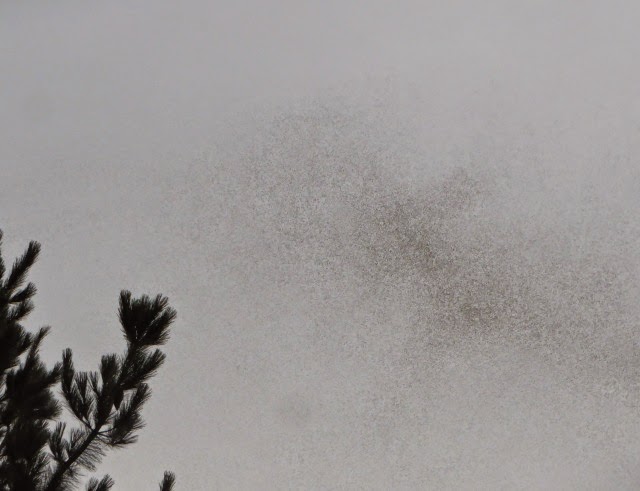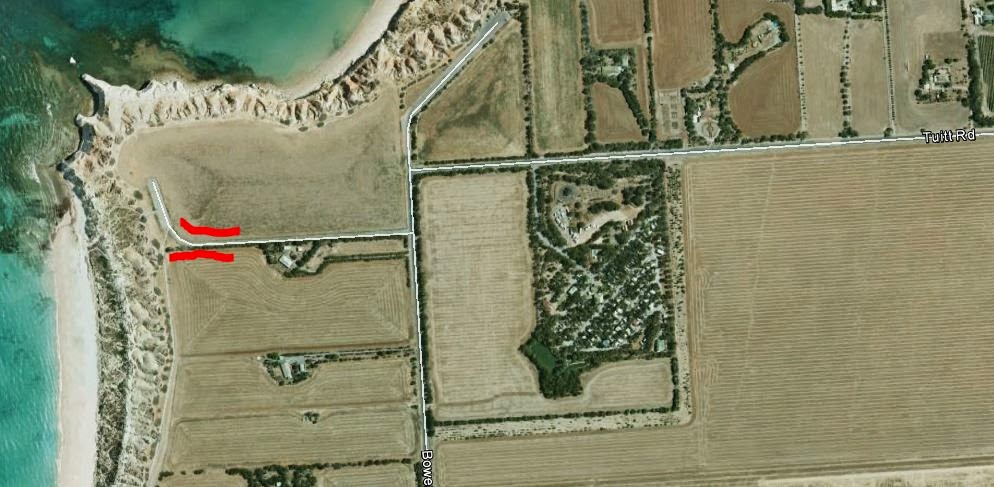Negative on the ladybird (plus a couple of other things)
Most of the ladybirds I see around here are yellow to red, with a variable number of black spots on them. It was thus interesting to find one today with the opposite situation: black with orange spots.
It appears to match the images of Parapriasus australasiae shown on Brisbane insects.
In an earlier post I showed a strange looking larval insect which Denis Wilson identified as a ladybird larva. A very similar mini-beast was also present this morning and in this case I will take a punt that it is the offspring of the adult lower down the twig..
Here is a closeup of the larva.
The text on Brisbane insects notes that these ladybirds predate scale insects. Thus they are a Good Thing. If only they predated Cherry Slugs (sawfly larvae)!
I haven't said much about our frogmouths recently. They are back, and I am finding them more frequently this year than in the past. Today I didn't find them initially but went looking for some noisy Scarlet Robins. It emerged the Robins were harassing the Froggies in a previously unknown roost (about 15m from one of their current favourites)
An interesting point was that later in the day the female had moved up a bit so was level with, but still on a different branch to, the male. It is quite unusual for this pair to shift branches during a day. By 31 March I had found them on 80% of days in that month: in contrast in March last year I could only find them on 50% of days. I suspect that this reflects them fairly frequently using a roost I only discovered later in 2011.
A bit later we were shifting some stuff around and found this unusual looking spider in the middle of a pile.
Not only was it an unusual shape (for an arachnid) but the white palps were extremely obvious when seen in the flesh(?). I will say it is a jumping spider (family Salticidae) but at this stage go no further.
.
It appears to match the images of Parapriasus australasiae shown on Brisbane insects.
In an earlier post I showed a strange looking larval insect which Denis Wilson identified as a ladybird larva. A very similar mini-beast was also present this morning and in this case I will take a punt that it is the offspring of the adult lower down the twig..
Here is a closeup of the larva.
The text on Brisbane insects notes that these ladybirds predate scale insects. Thus they are a Good Thing. If only they predated Cherry Slugs (sawfly larvae)!
I haven't said much about our frogmouths recently. They are back, and I am finding them more frequently this year than in the past. Today I didn't find them initially but went looking for some noisy Scarlet Robins. It emerged the Robins were harassing the Froggies in a previously unknown roost (about 15m from one of their current favourites)
An interesting point was that later in the day the female had moved up a bit so was level with, but still on a different branch to, the male. It is quite unusual for this pair to shift branches during a day. By 31 March I had found them on 80% of days in that month: in contrast in March last year I could only find them on 50% of days. I suspect that this reflects them fairly frequently using a roost I only discovered later in 2011.
A bit later we were shifting some stuff around and found this unusual looking spider in the middle of a pile.
Not only was it an unusual shape (for an arachnid) but the white palps were extremely obvious when seen in the flesh(?). I will say it is a jumping spider (family Salticidae) but at this stage go no further.
.








Comments
Nice Ladybird (negative).
The last shot looks like something is pupating. Not sure - Ladybirds do go through complete metamorphosis - so it is possible.
Denis
Thanks. I will keep an eye on the spot. It did seem very slothful.
Martin